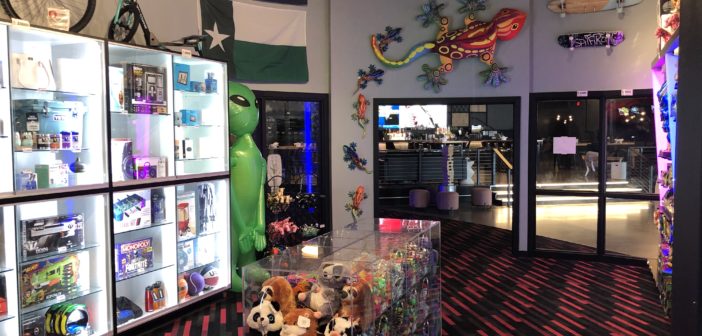Fundamentals Are, Well, Fundamental
By George McAuliffe, President, Pinnacle Entertainment Group

George McAuliffe
Mine is a basketball family. Having played the game, refereed for 25 years, and watched tons of my son’s games, I am a huge believer in how great teams have great fundamentals, and how great fundamentals win games. Watching March Madness? See how many games are lost because of a bad pass, not squaring up on a shot or failure to box out on a rebound.
Fundamentals for a redemption merchandise supplier include understanding what customers need, being product innovators, having a wide selection for FECs to choose from and delivering at a great price. Beyond “just” the merchandise, tools such as web-based ordering, EPLs (electronic ordering), reading barcoding and effective automated reordering process are fundamental. These are all designed to help FECs deliver a great guest experience to their customers.
Great FEC operators excel in delivering on the fundamentals to their guests, the players.
Controlling Merchandise Costs Starts With Games
On the game side, begin by knowing your customers: who they are, their ages and what they like in games, and then tailoring the game mix accordingly. Every redemption game (including cranes and merchandisers) is designed with a certain “payout” level, to maximize earnings. (“Payout” is defined as tickets out of a game, multiplied by ticket value, divided by that game’s sales.)
In today’s FEC, good management information systems are fundamental. If you have an increase in your merchandise cost of sales, step one is to look at your game payouts. If they have gone up, that means that you have more tickets, and therefore more merchandise purchasing power, circulating in your game room. Payouts too low? You are shortchanging the customer.
Once the correct payout for a game is set, it normally doesn’t change radically. If it does, the culprit is most often a technical glitch. Imagine being the player who finally gets the ball into the 100 hole on Skee-Ball and doesn’t get the tickets! By checking payouts frequently –– no less than weekly –– good operators are maximizing sales while controlling costs. That’s why payout management is often called “the first line of defense in redemption profitability.”
Next Stop, The Redemption Center
Fundamentals here include having a good feel for what customers want, picking the right prizes and presenting them attractively. Knowing your numbers is also fundamental. The “bottom line” for redemption numbers is cost of sales, the cost in prizes out as a percentage of redemption game sales. This measures the profitability of your redemption program and it is the key number in measuring the value that you deliver to the players.
The customer’s value perception is what drives sales. In retail, it is easier to manage because the sale of goods is a direct transaction. An item comes with a specific cost and is sold for a specific price. For redemption operators, it’s more complicated. You buy merchandise and place it on display in your redemption centers. The sales are collected by your games.
Maintaining and understanding ticket value, how much each of your tickets is actually worth, is the key first step. As operators, if we apply a markup to what we pay for an item, say a markup of 1.8, this means we multiply our cost in cents by 1.8 to set the shelf price of 180 tickets for an item costing $1.00. When we do this, our ticket value becomes .0055 (a little over a half-cent per ticket … the formula is 1/markup, in this case, 1/1.8).
Understanding the effect of markup on ticket value is critical to managing cost of sales. It has an effect on shelf price AND game payout. A complete understanding of both is necessary to correctly measure the value we are delivering to the player. The player’s value perception is what drives sales.
Understanding the Player
Regular readers have heard this before, but it bears repeating. Redemption players fall into four broad categories labeled “Impulse,” “Traders,” Savers,” and “Super Savers.”
Impulse players “spend” all of their tickets each visit, they want instant gratification and tend to be the youngest customers. Traders play for a better prize and tend to be a little older. Savers play for a chosen prize, often playing one or just a few games to maximize tickets. Super Savers are the ones we all like to have, they are totally into the redemption thing, think of tickets as money and save them for the biggest prizes.
A good system serves the entire audience and incentivizes players to move up the line from Impulse through Super Savers. After all, players must come back more often, and play more per visit, to advance.
If an FEC is at its best (and most profitable) when it delights its guests, it has accomplished that by managing many details and moving parts. It requires strong fundamentals to pull that off!
George McAuliffe has helped hundreds of businesses large and small develop and execute arcades and FECs. He has personally operated family entertainment centers from 2,000 to 150,000 square feet as a corporate executive, entrepreneur and consultant. He is the owner, with his partner and son Howard, of Pinnacle Entertainment Group.
George lives on the Jersey Shore with his wife, Julie. They have three sons, two daughters-in-law and a grandson.
Readers can learn more about Pinnacle at grouppinnacle.com or contact George at georgemc@ grouppinnacle.com; phone: 314-422-7197.




